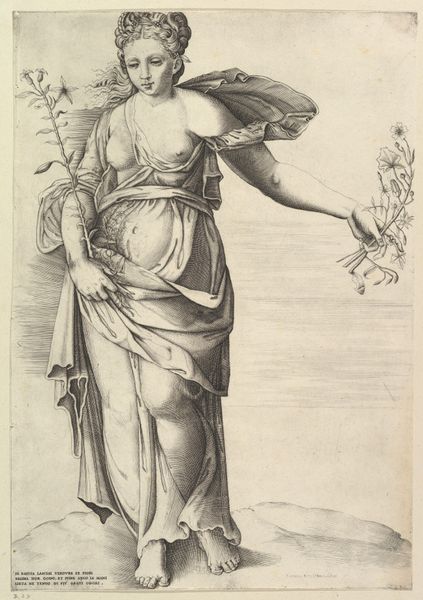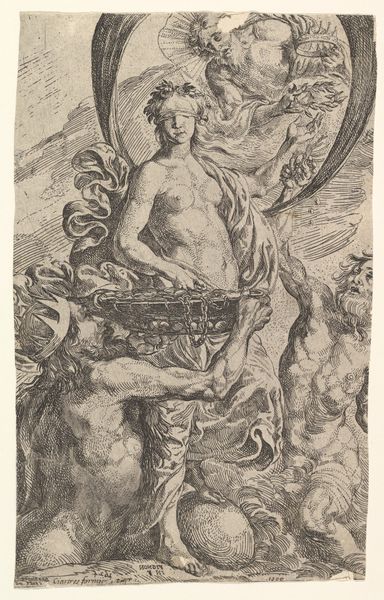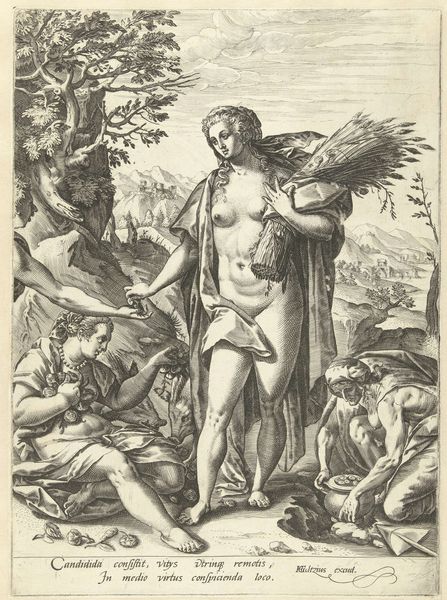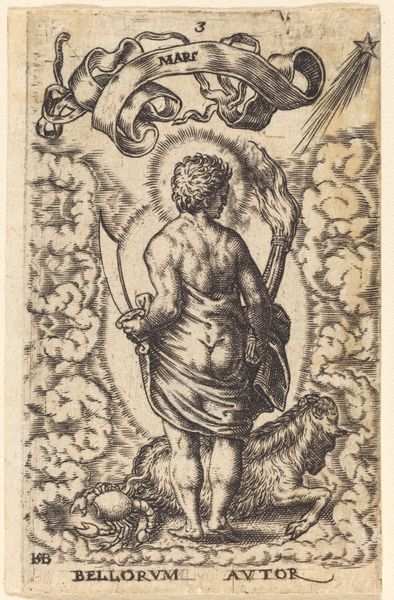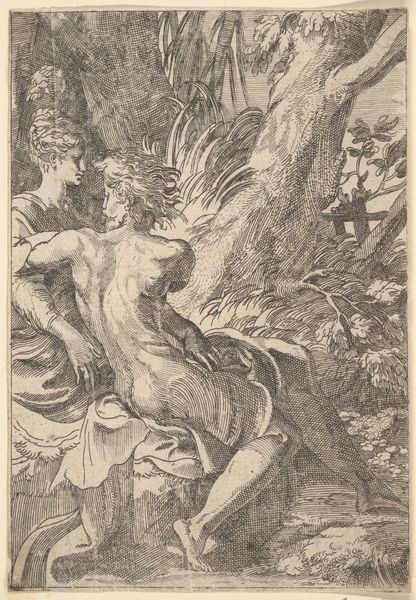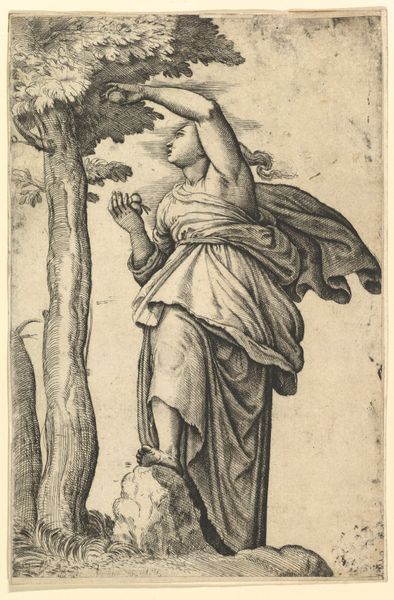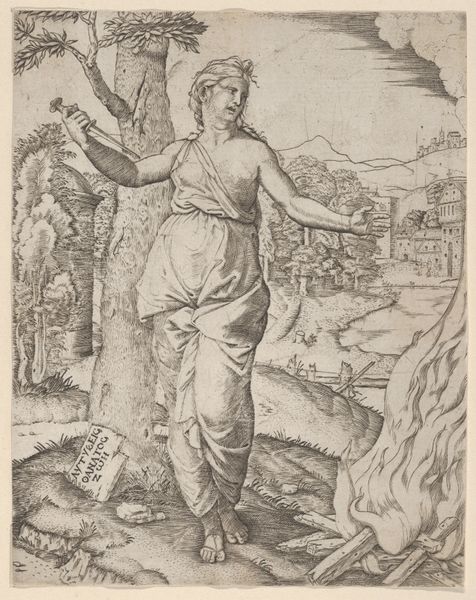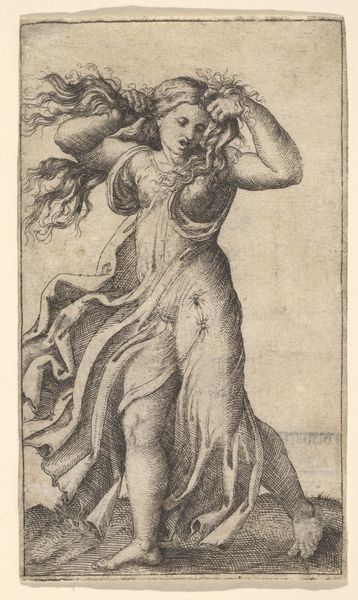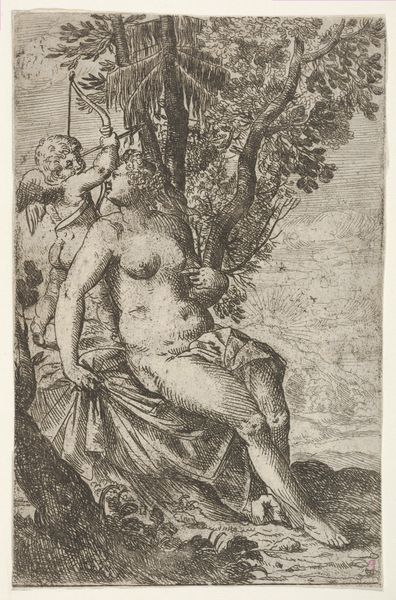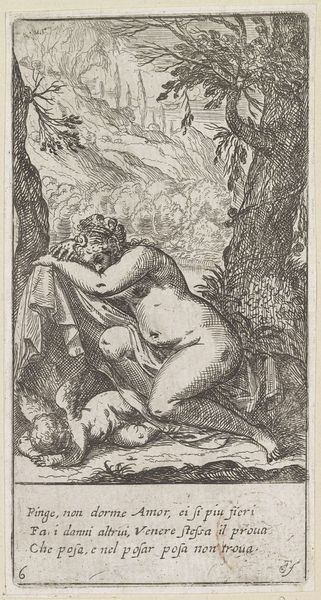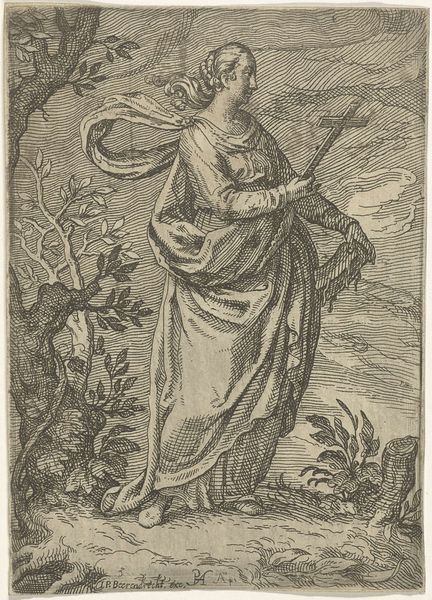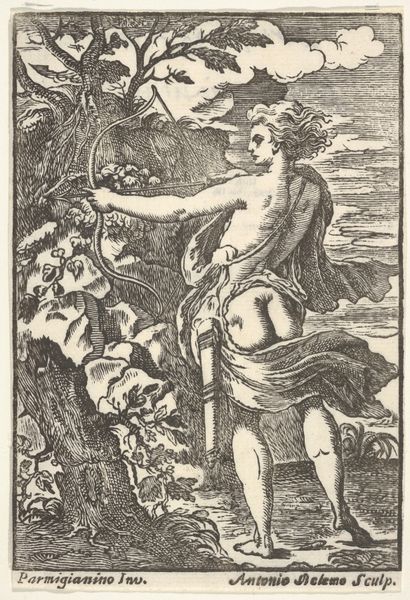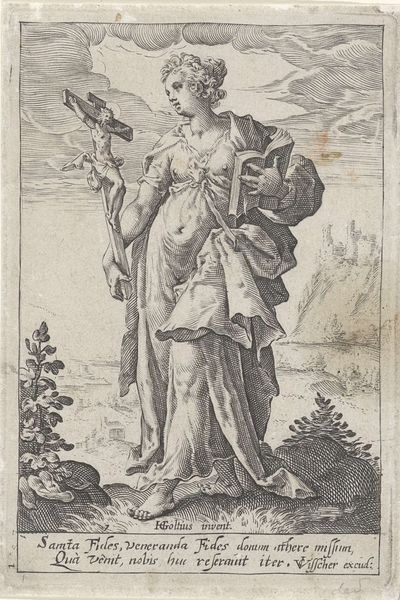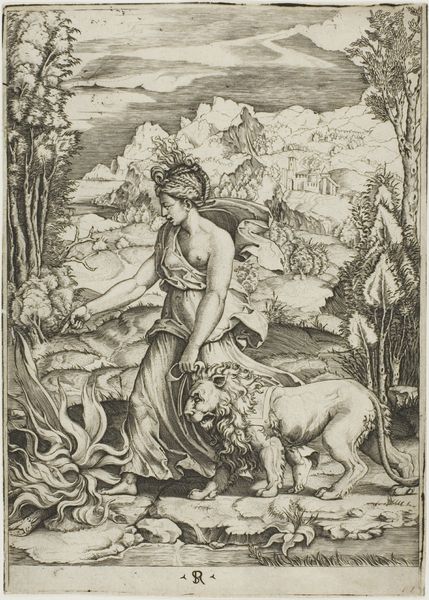
print, engraving
#
allegory
# print
#
mannerism
#
figuration
#
history-painting
#
engraving
Dimensions: 2 13/16 × 2 1/8 in. (7.14 × 5.4 cm) (sheet)6 1/16 × 16 3/4 in. (15.4 × 42.55 cm) (mount)
Copyright: Public Domain
Editor: Here we have "Phlegmatic Temperament," an engraving by Virgil Solis dating from somewhere between 1530 and 1562. The figure strikes me as very still, almost lifeless, which I suppose makes sense given the title. What compositional choices stand out to you in this print? Curator: The use of line is paramount here. Notice how Solis varies the density and direction of the engraved lines to create form and texture. The drapery folds are rendered with meticulous detail, contrasting with the more loosely defined background elements. Observe how this interplay between light and shadow articulates a bodily inertia. Editor: I do see that, especially in her dress! Is there a symbolic component to the owl perched on her shoulder, or even to the unruly water she is sitting on? Curator: Absolutely. Consider the formal relationships: the owl, often associated with wisdom, contrasts with the inert human figure. The turbulent water could symbolize the instability of emotions, while the overall composition—the deliberate arrangement of these elements—contributes to a visual commentary on the complexities of temperament. Can you observe a sense of stillness? Editor: I do see how the texture indicates a subtle and detailed focus amid turmoil. It's fascinating how the artistic handling enhances that feeling of suspended animation. Thank you. Curator: A valuable lesson indeed, showing how the formal elements of line, texture, and composition combine to articulate an intellectual idea in this Mannerist print.
Comments
No comments
Be the first to comment and join the conversation on the ultimate creative platform.
